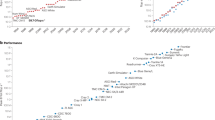Abstract
Work is under way throughout the world to realize the promise of petascale computing and to complete the emergence of simulation as the third leg of science, joining theory and experiment. By the end of this decade, our ability to attack previously unsolvable problems will provide the basis for transformational advances in science and engineering that will enable us to address global challenges in energy, environment, and national security. In the United States, three government agencies are pursuing petascale initiatives: the Defense Advanced Research Projects Agency, the National Science Foundation, and the U.S. Department of Energy (DOE). I will describe the new capability for high-end science that is being fielded by DOE’s Leadership Computing Facility at Oak Ridge National Laboratory and discuss how this capability will be applied to such computationally challenging problems as climate modeling and prediction, astrophysics, nuclear fusion, systems biology, and materials design at the nanoscale.
Similar content being viewed by others
Author information
Authors and Affiliations
Editor information
Editors and Affiliations
Rights and permissions
Copyright information
© 2006 Springer-Verlag Berlin Heidelberg
About this paper
Cite this paper
Wadsworth, J. (2006). Advanced Scientific Computing: An Extraordinary Tool for Extraordinary Science. In: Robert, Y., Parashar, M., Badrinath, R., Prasanna, V.K. (eds) High Performance Computing - HiPC 2006. HiPC 2006. Lecture Notes in Computer Science, vol 4297. Springer, Berlin, Heidelberg. https://doi.org/10.1007/11945918_5
Download citation
DOI: https://doi.org/10.1007/11945918_5
Publisher Name: Springer, Berlin, Heidelberg
Print ISBN: 978-3-540-68039-0
Online ISBN: 978-3-540-68040-6
eBook Packages: Computer ScienceComputer Science (R0)




